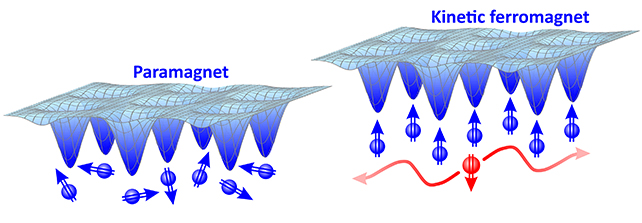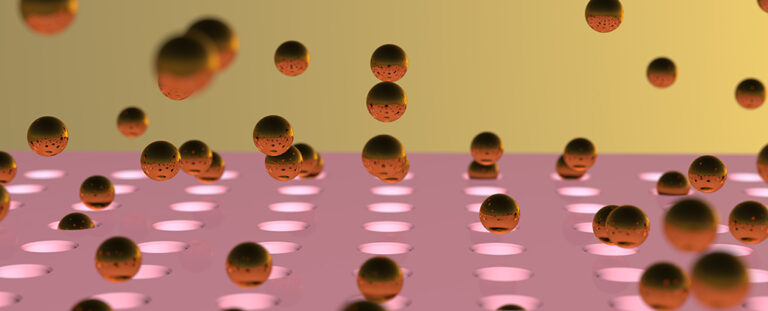Unusual Magnetism Discovered in Material Only Six Atoms Thick
Over fifty years ago, Yosuke Nagaoka, a Japanese physicist, proposed a unique theory regarding the expansion of a magnetic field caused by wandering electrons in search of a resting place. This theory challenged the conventional models of ferromagnetism and offered a different perspective.
Recently, a fascinating phenomenon was observed in a stack of alternating semiconductors, which could be explained by Nagaoka’s speculations. However, this discovery also brought about unexpected surprises.
Researchers from ETH Zürich in Switzerland conducted an experiment involving atomically thin grids made of two different synthetic materials. These grids were layered together, creating a moiré pattern, similar to the pages of the thinnest book in the world.
According to Ataç Imamoğlu, the senior author of the study and a physicist, moiré materials have gained significant attention in recent years due to their ability to investigate quantum effects of strongly interacting electrons. However, their magnetic properties remained largely unknown until now.
Magnetism is a collective effort of numerous electrons that align themselves based on a quantum contract governed by their spin. Unlike the physical rotation of a ball, an electron’s spin is a binary characteristic, either up or down, similar to a tiny magnet’s north or south pole.
When a sufficient number of these tiny magnets align their spins, their collective behavior enables objects like a regular piece of iron to magnetically attract and hold items such as your niece’s drawing of a smiling daffodil on the fridge door.
The alignment of electrons is determined by an agreement that arises from their interactions within the atom. According to quantum law, electrons with the same spin tend to keep their distance from each other, resulting in a pattern that amplifies their magnetism under specific conditions.
In the 1960s, Nagaoka proposed an alternative arrangement that could potentially occur through a different kind of agreement. Instead of being based on the exchange of spins, this arrangement would be influenced by the electrons’ desire to explore new territories.
Nagaoka envisioned a grid resembling a cityscape, with electrons positioned at street corners like enthusiastic street performers. By leaving one corner vacant, he discovered that electrons would move around, seeking spaces that were as far away as possible from other electrons. Each movement would create a new vacancy, causing a “hole” to jump from one street to another.
This kinetic effect of empty street corners could potentially lead to the emergence of a large-scale effect on spins, resulting in a more pronounced magnetic field.
Although this “kinetic” magnetism has been observed among a small number of electrons, it had not been witnessed on a larger scale until now.
Imamoğlu explains that until now, the presence of kinetic magnetism has only been observed in model systems, such as four coupled quantum dots, and not in extended solid state systems like the one they used. In their system, they utilized six layers of two different semiconductors, molybdenum diselenide and tungsten disulfide. These layers could be stacked on top of each other, creating ‘street corners’ due to the moiré effect between the layers.
After cooling the thin layers to minimize thermal jiggling, a voltage was applied to introduce a small number of electrons. As expected, each electron found a street corner to exhibit its unique spin. However, contrary to Nagaoka’s hypothesis, magnetism only emerged when there was a significant surplus of electrons.

Instead of being attracted to empty spaces, the competition for a suitable place to occupy resulted in the formation of short-lived dual-acts called doublons. The presence of numerous doublons caused the material to exhibit a previously unseen form of magnetism.
Although this discovery may not immediately lead to new technologies or innovative ways of displaying artwork on refrigerators, it does provide valuable insights for researchers regarding future electronic behaviors.
This article is republished from sciencealert under a Creative Commons license. Read the original article.
Do not forget to share your opinion with us to provide you with the best posts !




0 Comments